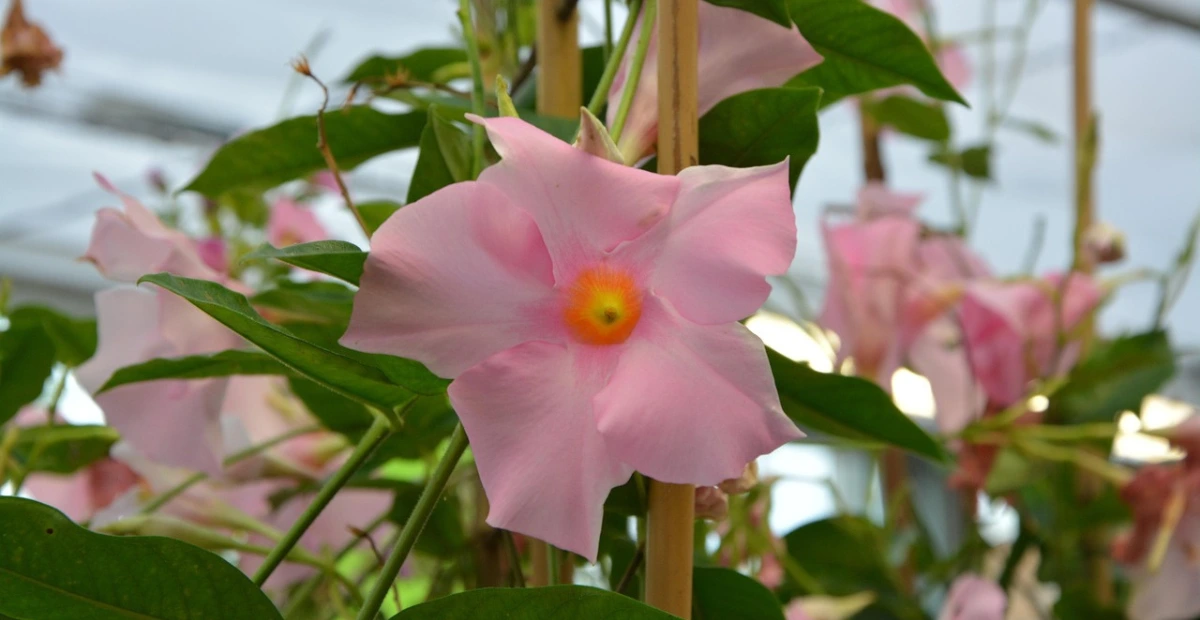Introduction: Unleash Your Garden’s Hidden Potential
Picture stepping into your backyard and being greeted by cascades of vibrant blooms that transform plain walls into living tapestries. Flowering vines aren’t just plants—they’re nature’s artists, weaving color and life into every corner of your outdoor space. Whether you’re a novice gardener or a seasoned green thumb, this guide will show you how to cultivate five breathtaking varieties with minimal effort. Let’s turn your garden into a sanctuary that thrives season after season.
advertisement
Table of Contents
Why Flowering Vines Deserve a Spot in Your Garden
If you’ve ever felt limited by a small yard, uneven sunlight, or lackluster landscaping, flowering vines are your secret weapon. These versatile climbers solve common gardening frustrations while delivering jaw-dropping beauty:
- Maximize Vertical Space: Perfect for balconies, patios, or narrow side yards.
- Instant Privacy: Screen unsightly views with lush foliage and blooms.
- Low Maintenance: Many varieties thrive with basic care, even in poor soil.
- Eco-Friendly: Attract pollinators like bees, butterflies, and hummingbirds.
advertisement
Studies show that vertical gardens can reduce urban heat islands by up to 50% (Journal of Environmental Horticulture), making flowering vines a smart choice for eco-conscious gardeners.
5 Foolproof Flowering Vines for Every Growing Condition
Let’s dive into five stunning varieties that blend beauty with resilience. Each plant includes tailored growing tips to ensure success, no matter your skill level.
1. Clematis: The Royal Star of Vertical Gardens
Why You’ll Love It: Known as the “Queen of Climbers,” clematis offers large, velvety blooms in shades of purple, pink, and white.
Growing Simplified:
- Sun Strategy: Plant in “full sun tops, cool roots” (use mulch or groundcover to shade the base).
- Support System: Install a trellis or let it scramble over arbors.
- Pruning Hack: Trim based on bloom group (Group 1: no pruning; Group 2: light trim post-bloom; Group 3: cut to 12” in early spring).
advertisement
Pro Tip: Pair with low-growing perennials like lavender to protect roots from heat.
2. Trumpet Vine: A Hummingbird’s Paradise
Why You’ll Love It: Fiery orange-red trumpet-shaped flowers attract hummingbirds like magnets.
Growing Simplified:
- Sun Needs: Thrives in full sun (6+ hours daily).
- Control Spread: Plant in containers or use root barriers to prevent aggressive growth.
- Drought Defense: Water deeply once weekly once established.
Caution: Wear gloves when handling—sap can irritate sensitive skin.
3. Star Jasmine: Fragrance That Stops Traffic
Why You’ll Love It: Its sweet, intoxicating scent and glossy evergreen leaves make it a year-round showstopper.
Growing Simplified:
- Light Balance: Morning sun + afternoon shade in hot climates.
- Container-Friendly: Use well-draining soil in pots for patios or balconies.
- Winter Care: Protect from frost with burlap in zones below 7.
advertisement
Bonus: Harvest blooms for homemade potpourri or floral arrangements.
4. Morning Glory: Fast Color for Impatient Gardeners
Why You’ll Love It: These rapid growers deliver heart-shaped leaves and vivid blue, purple, or pink blooms in just 60 days.
Growing Simplified:
- Seed Prep: Soak seeds in water overnight to speed germination.
- Support Setup: Train on fences, mailboxes, or DIY twine grids.
- Self-Seeding Magic: Let flowers drop seeds for next year’s surprise display.
Fun Fact: Blooms open at dawn and close by afternoon—hence the name!
5. Climbing Hydrangea: Shade’s Best-Kept Secret
Why You’ll Love It: This hardy vine thrives in shady spots with clusters of white lacecap blooms.
Growing Simplified:
- Patience Pays: Slow to establish but long-lived (up to 50 years!).
- Soil Sweet Spot: Slightly acidic, moisture-retentive soil enriched with compost.
- Design Hack: Pair with ferns or hostas for a woodland aesthetic.
advertisement
Your Step-by-Step Planting Guide
Prep Work: Setting the Stage for Success
- Soil Test: Most flowering vines prefer pH 6.0–7.0. Adjust with lime (to raise pH) or sulfur (to lower).
- Support Structure: Install trellises, arbors, or wires before planting to avoid root disturbance.
- Spacing: Keep 12–18 inches between plants and structures for airflow.
Planting Day: A Stress-Free Routine
- Step 1: Dig a hole twice as wide as the root ball.
- Step 2: Mix compost into native soil for nutrients.
- Step 3: Position the plant at the same depth as its nursery pot.
- Step 4: Water deeply and secure stems to supports with soft twine.
Table: Flowering Vines Quick-Start Cheat Sheet
advertisement
| Variety | Best For | Water Needs | Key Tip |
|---|---|---|---|
| Clematis | Trellises | Moderate | Keep roots cool with mulch |
| Trumpet Vine | Pergolas | Low | Use root barriers |
| Star Jasmine | Containers | Moderate | Prune after flowering |
| Morning Glory | Fences | High | Soak seeds overnight |
| Climbing Hydr. | Shaded Walls | High | Add peat moss to soil |
Avoid These 3 Costly Mistakes
Overwatering: The Silent Killer
- Signs: Yellow leaves, moldy soil.
- Fix: Use the finger test—water only if the top 2 inches of soil feel dry.
Ignoring Light Requirements
- Example: Morning glory in shade = leggy stems, few blooms.
- Solution: Match plants to your garden’s sun patterns.
Skipping Pruning
- Result: Overgrown vines with sparse flowers.
- Rule of Thumb: Prune after flowering for spring bloomers, late winter for summer varieties.
Design Inspiration: Creative Ways to Showcase Flowering Vines
- Privacy Screen: Train jasmine on a lattice panel beside your patio.
- Archway Drama: Let clematis and climbing roses intertwine over a garden arch.
- Container Magic: Grow dwarf trumpet vines in large pots flanking your front door.
advertisement
FAQs: Your Top Questions Answered
Q: Can flowering vines survive winter?
A: Yes! Many, like clematis and climbing hydrangea, tolerate frost. Mulch roots in late fall for insulation.
Q: How do I stop pests from damaging my vines?
A: Spray aphids with a mix of water and dish soap. For Japanese beetles, handpick them at dawn when they’re sluggish.
Q: Are flowering vines safe for pets?
A: Most are pet-friendly, but avoid moonflower (toxic to dogs) and wisteria seeds.
Conclusion: Your Garden’s Makeover Starts Now
Flowering vines are the ultimate multitaskers—beautifying spaces, supporting ecosystems, and boosting your home’s value. With these five varieties and practical tips, you’re equipped to create a garden that feels like a private retreat. Don’t just imagine those blooms; plant them today and watch your outdoor space transform.
advertisement
CTA: Ready to become a vine virtuoso? Grab your gardening gloves, pick your favorite variety, and share your progress with #BloomingVines on social media. Let’s grow something amazing together!


